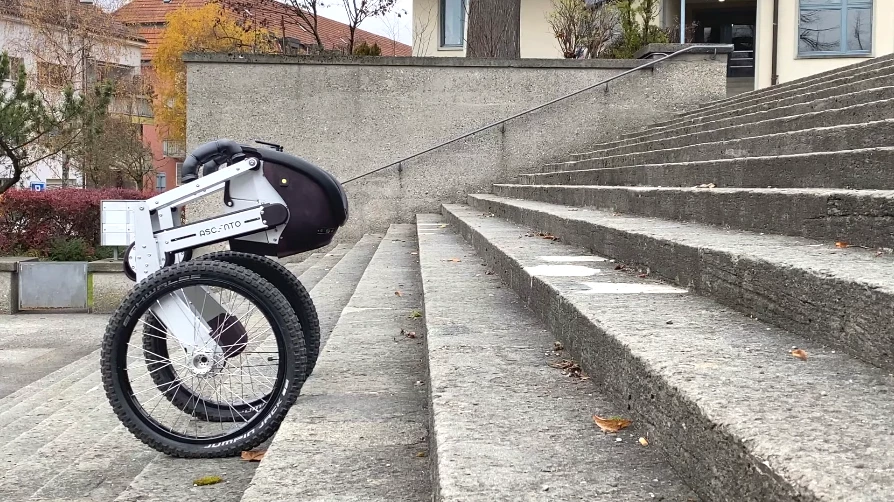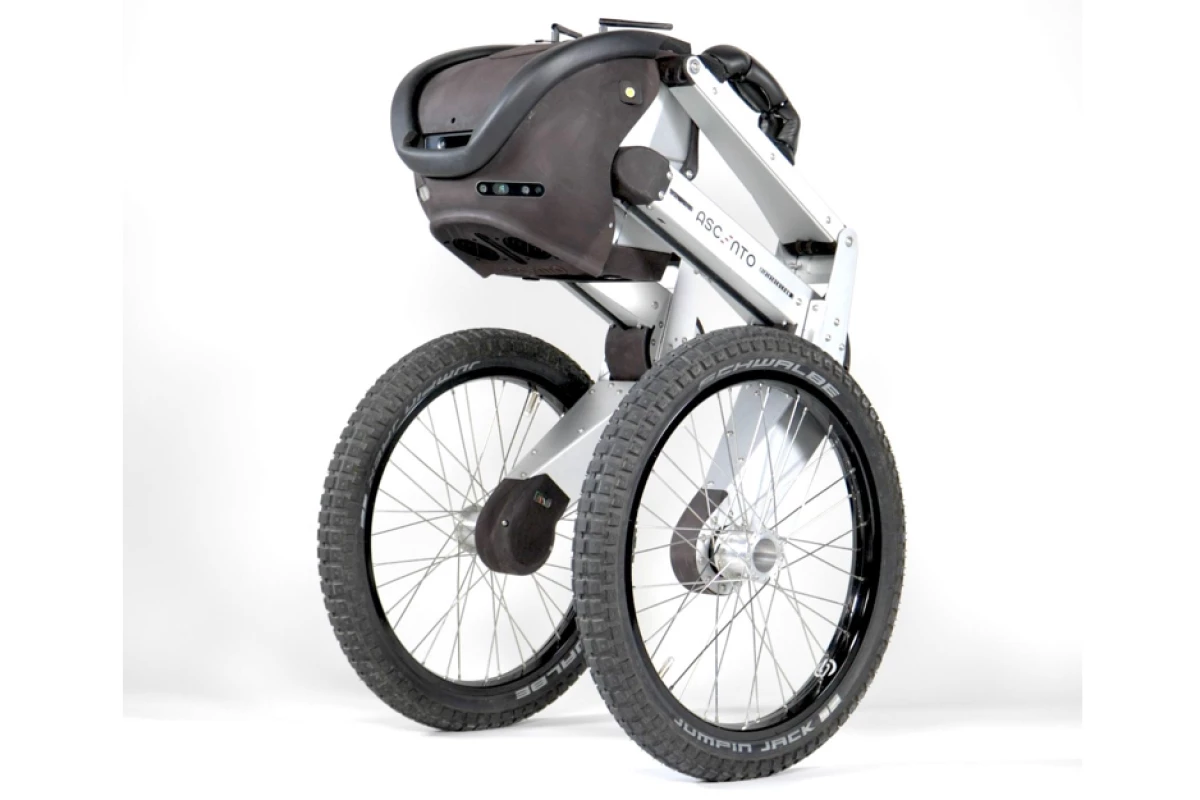It was just last year that we heard about the Ascento 2, a self-balancing, two-legged, wheeled, hopping robot. Well, as if it wasn't already impressive enough, its designers have now unveiled the even more capable Ascento Pro.
To quickly recap our previous coverage, the Ascento 2 was created by a team of engineering students at Switzerland's ETH Zurich research institute. It features two bendable legs, each one with a hub-motorized wheel on the bottom.
For moving along flat surfaces such as floors or roads, it quickly and efficiently rolls along on those wheels. When it encounters an obstacle, though, it stops and crouches down to preload its spring-equipped legs, then jumps up and forward to hop over the object. By performing this action repeatedly, the robot is even capable of climbing stairs.
Additionally, because its legs are able to bend independently of one another, the Ascento 2 can stay level and maintain its balance when traversing uneven terrain. This functionality also allows the robot to remain standing when struck from one side, and to get back up after falling over.
The Ascento Pro packs all of those same features, and then some.

For one thing, while the Ascento 2 is only partially capable of autonomous operation, the Pro is fully capable, using LiDAR, onboard cameras and LED headlights to find its way around. It's even able to locate a system-specific charging post, which it lowers its upper body onto in order to engage a charging port on its underside.
Speaking of which, while the Ascento 2 runs for about 1.5 hours per charge, the Pro can reportedly go for a whopping eight hours. Its battery can then be removed and swapped for a freshly-charged one, if necessary.
The Pro also has larger wheels than its predecessor, allowing it more easily roll over small obstacles, plus it's faster – it has a top speed of 12 km/h (7.5 mph), as compared to the Ascento 2's 8 km/h (5 mph).
Possible uses for the Ascento Pro include inspection, surveillance, urban deliveries and robotics research. It can be seen in action, in the following video.
Source: Ascento Robotics via IEEE Spectrum




